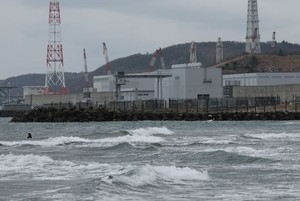By KAZUMICHI KUBOTA/ Staff Writer
August 27, 2022 at 07:00 JST
DAIGO, Ibaraki Prefecture--In April 1941 and fresh out of teacher’s training college, Hiroko Kikuchi was assigned to the Kurosawa National Elementary School in a mountainous area here.
She had just turned 19 years old.
The children there cherished a doll they had nicknamed “Mary.”

It was one of around 13,000 “blue-eyed dolls” sent to Japan 14 years earlier by a U.S.-based group as a gesture of friendship as relations between the two countries started plummeting following mounting calls for the expulsion of Japanese immigrants.
Only months after Kikuchi began working, the Pacific War broke out on Dec. 8 following the Japanese attack on Pearl Harbor the day before. The incident is remembered in Japan on Dec. 8 because of the difference in time zones.
Before long, Kikuchi was ordered by the school principal to consign the toy to the flames of a bonfire as the American dolls were banished from schools during the war as “enemy” elements.
But Kikuchi could not bring herself to destroy the toy and hid it on the lowest shelf of a bookcase placed in an inconspicuous area of the school library.
Five or so years elapsed after the end of the war before Mary saw the light of day again. By that time, Japan was in the process of rebuilding itself into the nation that the world knows today.
In the years leading up to her death, Kikuchi served as a storyteller at the former Kurosawa Elementary School, the successor of the Kurosawa National Elementary School, to talk about her wartime experiences and the value she placed on peace.
Some members of her audiences recalled her saying that she couldn’t bring herself to destroy the cute-looking doll even though it was sent by “the enemy state” because it had nothing to do with the war.

Hiromichi Iimura, 74, who had served as vice principal at the school since 2005, was also inspired by her teachings.
“If the doll had been found, both Ms. Hiroko (Kikuchi) and the principal would have been severely punished,” he said.
Iimura enrolled at the branch school of the Kurosawa Elementary School in 1955 and was well aware of Kikuchi’s reputation as she was still teaching at the main school.
He gave her a ride to and from the school when she gave talks to recount her experiences.
At every opportunity, Kikuchi recalled the circumstances that led her to hide the doll.
Even though she was able to keep the doll safe, she was full of regret at having burned a photo believed to be of a missionary who sent the doll to Japan.
In 2006, Kikuchi visited the elementary school to talk about restoring the outfit of the doll to as it was when it was sent to Japan. In her hand, she held a picture of a hat and a skirt that she had drawn from memory.
School staff members offered their help and arranged for the doll to be repaired.
Kikuchi broke down in tears when she saw Mary restored to her original state, the members said.
She died in late 2016.
The Kurosawa Elementary School was integrated with another elementary school in the town in spring 2019.
Mary is now entrusted to the Ibaraki Prefectural Archives and Museum.
Iimura and his former classmates started thinking about what they could do to pass down the story of their teacher who went to great personal risk to save Mary for future generations in the community.
In June this year, ahead of the centenary of Kikuchi’s birth, Iimura, Yasuyuki Omori, Tomoyuki Murayama and Teruo Nishimura jointly organized a special exhibition to introduce the story about the doll and Kikuchi’s role in saving it.
On display at the venue were a “kamishibai” picture card show about Kikuchi and Mary, her self-published book and numerous related photos.
Some visitors said their schools also received blue-eyed dolls that were later destroyed.
“Mary is like a treasure to this town,” Iimura said. “We want to pass down the story about someone who protected it and kept it safe.”




















A peek through the music industry’s curtain at the producers who harnessed social media to help their idols go global.
A series based on diplomatic documents declassified by Japan’s Foreign Ministry
Here is a collection of first-hand accounts by “hibakusha” atomic bomb survivors.
Cooking experts, chefs and others involved in the field of food introduce their special recipes intertwined with their paths in life.
A series about Japanese-Americans and their memories of World War II